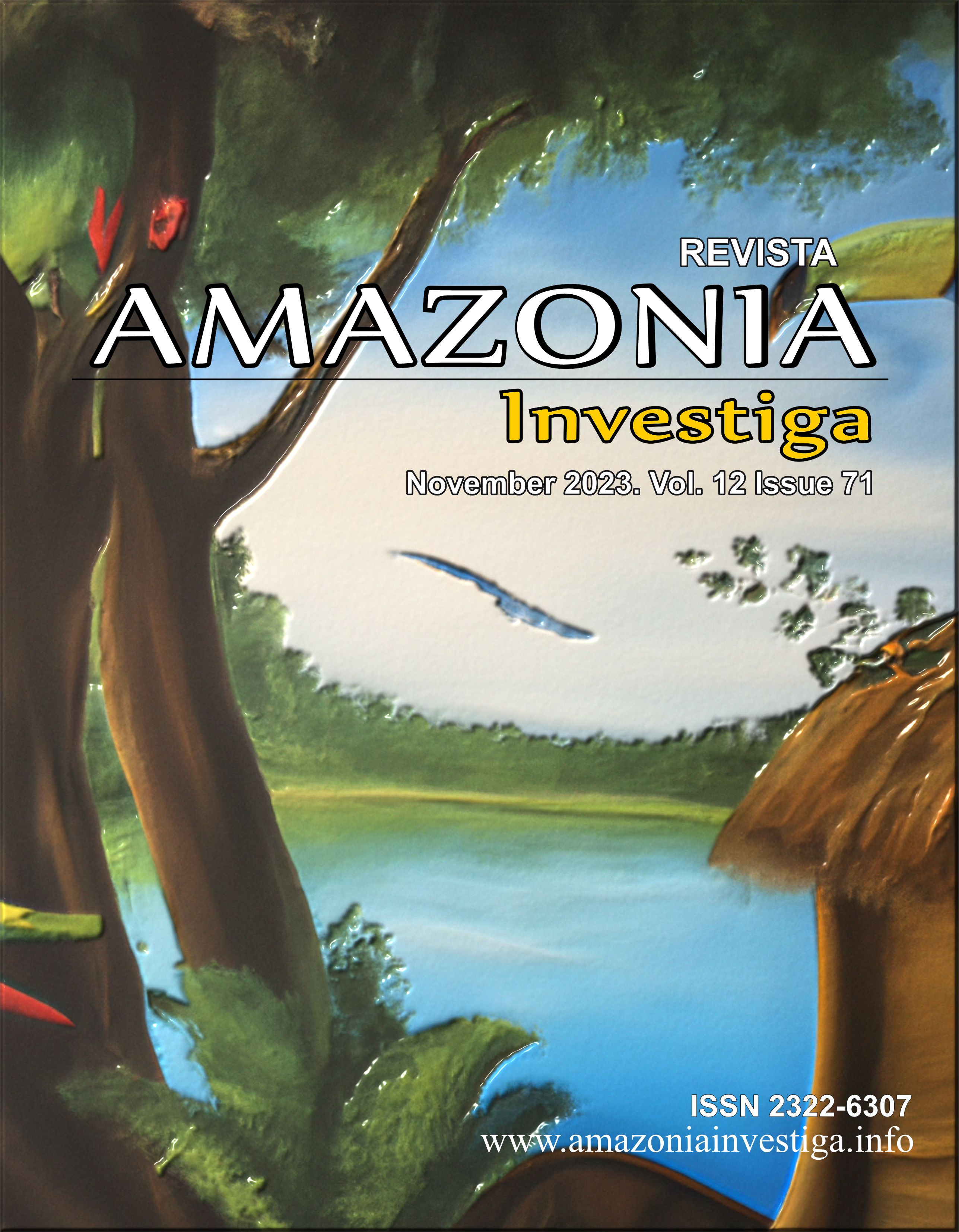Administrative and legal methods of preventing corruption among public authorities: the experience of EU countries
Publicado 2023-11-30
Palabras clave
- corruption, quality of government, good governance, EU, prevention
Cómo citar
Resumen
The study deals with the analysis of administrative and legal methods used in EU countries to fight corruption among public authorities. Fighting corruption is critically important for ensuring transparency and accountability, good governance, and achieving the effectiveness of management actions. The aim of the article is to determine the effectiveness of administrative and legal methods used in the EU countries to fight corruption among public authorities based on the implementation of the good governance principles. The research methodology provided for the use of the methods of contextual analysis, comparison, and graphic correlation. The study outlined the necessary measures: improving legislation on the status of public authorities, the responsibility of public officials, introducing egovernance models and the concept of Good governance among public authorities of EU member states. It was found that the application of administrative and legal methods in the system of public administration is not enough for the implementation of anti-corruption policy, because corruption in the EU goes beyond the borders of one country and its law enforcement. In view of the expanding manifestations of corruption, implementation of effective administrative and legal methods of fighting corruption is an urgent task for public authorities and leading EU institutions. The specified will require a systemic approach, robust anticorruption institutions, and the establishment of legal anti-corruption mechanisms.
Descargas
Citas
Armand, A., Coutts, A., Vicente, P. C., & Vilela, I. (2023). Measuring corruption in the field using behavioral games. Journal of Public Economics, 218, 104799. https://doi.org/10.1016/j.jpubeco.2022.104799
Bozóki, A., & Heged?s, D. (2018). An externally constrained hybrid regime: Hungary in the European Union. Democratization, 25(7), 1173-1189. https://doi.org/10.1080/13510347.2018.1455664
Castro, C., & Lopes, C. (2022). Digital government and sustainable development. Journal of the Knowledge Economy, 13(2), 880-903. https://doi.org/10.1007/s13132-021-00749-2
Chen, L., & Aklikokou, A. K. (2021). Relating e-government development to government effectiveness and control of corruption: a cluster analysis. Journal of Chinese Governance, 6(1), 155-173. https://doi.org/10.1080/23812346.2019.1698693
Chong, S. P. C., Tee, C. M., & Cheng, S. V. (2020). Political institutions and the control of corruption: A cross-country evidence. Journal of Financial Crime, 28(1), 25-48. https://doi.org/10.1108/jfc-05-2020-0094
Di Mascio, F., Maggetti, M., & Natalini, A. (2020). Exploring the dynamics of delegation over time: Insights from Italian anti?corruption agencies (2003–2016). Policy Studies Journal, 48(2), 367-400. https://doi.org/10.1111/psj.12253
European Commission. (2023a). Directive of the European Parliament and of the Council on combating corruption. Retrieved from https://eur-lex.europa.eu/legal-content/EN/TXT/?uri=COM%3A2023%3A234%3AFIN
European Commission. (2023b). Joint Communication to the European Parliament, the Council and the European economic and social committee on the fight against corruption. Retrieved from https://commission.europa.eu/system/files/2023-05/JOIN_2023_12_1_EN.pdf
European Union. (1997). Convention drawn up on the basis of Article K.3 (2) (c) of the Treaty on European Union on the fight against corruption involving officials of the European Communities or officials of Member States of the European Union. Retrieved from https://acortar.link/zxUhH3
European Union. (2008). Council Decision 2008/852/JHA of 24 October 2008 on a contact-point network against corruption. Retrieved from https://acortar.link/picHf7
European Union. (2012). Consolidated versions of the Treaty on European Union and the Treaty on the Functioning of the European Union Union. Retrieved from https://acortar.link/pCE1CW
European Union. (2022). Corruption. Eurobarometer. Retrieved from https://europa.eu/eurobarometer/surveys/detail/2658
European Union. (2023). EU legislation on anti-corruption. Retrieved from https://acortar.link/ZgzII9
Gallego-Álvarez, I., Rodríguez-Rosa, M., & Vicente-Galindo, P. (2021). Are worldwide governance indicators stable or do they change over time? a comparative study using multivariate analysis. Mathematics, 9(24), 3257. https://doi.org/10.3390/math9243257
Gorsira, M., Steg, L., Denkers, A., & Huisman, W. (2018). Corruption in organizations: Ethical climate and individual motives. Administrative Sciences, 8(1), 4. https://doi.org/10.3390/admsci8010004
Johnston, M., & Heidenheimer, A. (2017). Political Corruption: Concepts and Contexts. New York, NY: Routledge. https://doi.org/10.4324/9781315126647
Kasa, R., Réthi, G., Hauber, G., & Szegedi, K. (2023). Simulation of corruption decisions – An agent-based approach. Sustainability, 15(3), 2561. https://doi.org/10.3390/su15032561
Lührmann, A., & Lindberg, S. I. (Eds.). (2020). Autocratization Surges – Resistance Grows. Democracy Report 2020. V-DEM. Retrieved from https://acortar.link/NZrOJN
Mao, Z., Yao, H., Zou, Q., Zhang, W., & Dong, Y. (2021). Digital contact tracing based on a graph database algorithm for emergency management during the COVID-19 epidemic: Case study. JMIR Mhealth Uhealth, 9(1), e26836. https://doi.org/10.2196/26836
Qu, G., Slagter, B., Sylwester, K., & Doiron, K. (2019). Explaining the standard errors of corruption perception indices. Journal of Comparative Economics, 47(4), 907-920. https://doi.org/10.1016/j.jce.2019.07.003
Rose-Ackerman, S. (2018). Corruption & purity. Daedalus, 147(3), 98-110. https://doi.org/10.1162/daed_a_00505
Silal, P., Jha, A., & Saha, D. (2023). Examining the role of E-government in controlling corruption: A longitudinal study. Information & Management, 60(1), 103735. https://doi.org/10.1016/j.im.2022.103735
Transparency International. (2023a). Corruption perceptions index 2022. Retrieved from https://www.transparency.org/en/cpi/2022
Transparency International. (2023b). CPI 2022 For Western Europe & EU: undue influence and fragmented anti-corruption measures hurt progress. Retrieved from https://acortar.link/oQOp6J
United Nations. (2020). E-Government survey 2020 – digital government in the decade of action for sustainable development. Retrieved from https://digitallibrary.un.org/record/3884686?ln=ru
United Nations. (2022). E-government survey 2022. The Future of Digital Government. Retrieved from https://acortar.link/2FVcv5
von Der Leyen, U. G. (2022). State of the Union Address by President von der Leyen. European Commission. Retrieved from https://acortar.link/Inq6Vt
World Bank. (2023). Worldwide Governance Indicators. Retrieved from https://info.worldbank.org/governance/wgi/
World Justice Project. (2020). Rule of Law Index 2020. Retrieved from https://acortar.link/pYgizO
Zou, Q., Mao, Z., Yan, R., Liu, S., & Duan, Z. (2023). Vision and reality of e-government for governance improvement: Evidence from global cross-country panel data. Technological Forecasting and Social Change, 194, 122667. https://doi.org/10.1016/j.techfore.2023.122667











